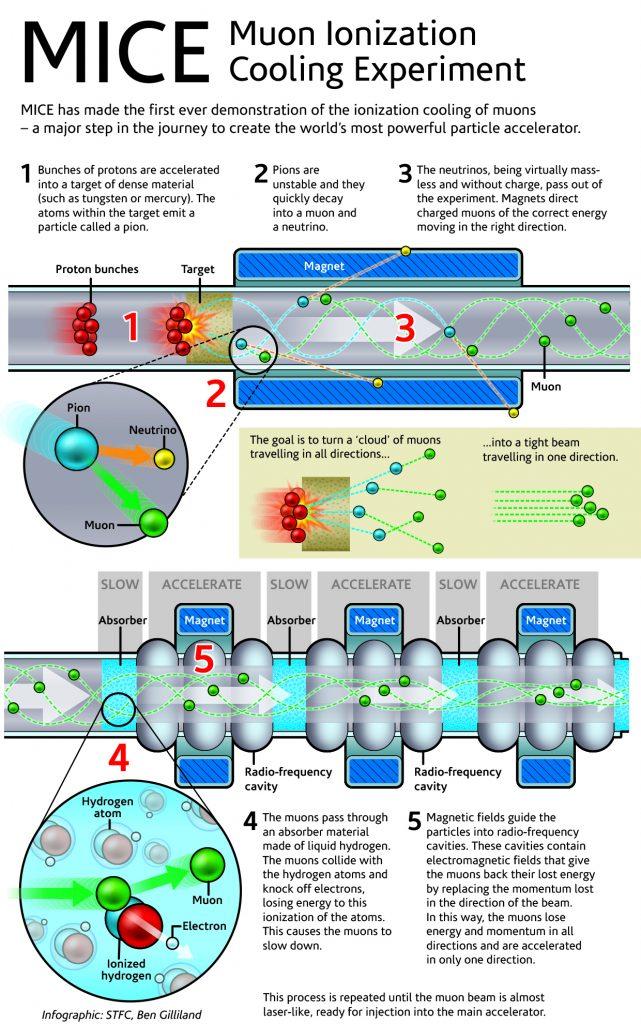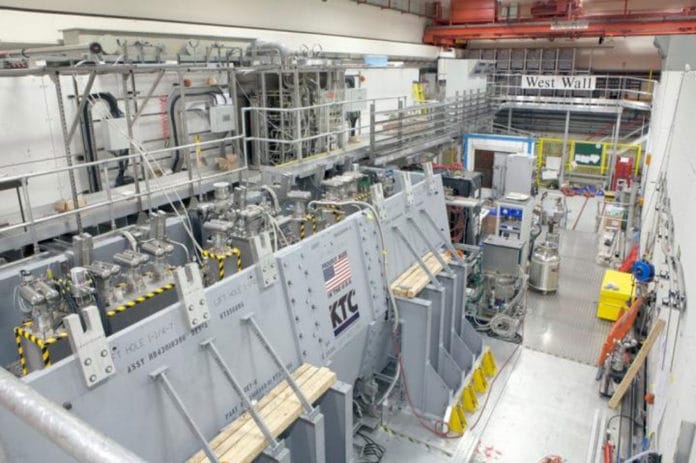Muons are usually occurring particles that are created in the Earth’s upper atmosphere by cosmic rays collisions. In this way are viewed as a follow-on particle accelerator to replace the LHC. Protons, a type of hardon, are utilized by the LHC, and they participate in strong interactions. Leptons, like to the electron and the muon, are not subject to the strong association. Instead, they communicate through the weak force.
Muons have an amazingly concise life expectancy of two-millionths of a second. They are created by smashing a beam of protons into a target. These muons form a diffuse cloud, implying that they are difficult to accelerate, and there is a low chance of them impacting and creating helpful, interesting physical phenomena. To make the cloud less diffuse, a procedure known as ‘Beam cooling‘ was proposed. This includes getting the muons closer together and moving a similar way. Be that as it may, because of the ultra-short life expectancy of muons, it has been not very easy to cool the shaft with the traditional methods.
Now, an international team of researchers, affiliated with UNIST, has successfully demonstrated the ionization cooling of muons. This is a significant step towards developing the world’s most powerful particle accelerator, which would provide a better understanding of the fundamental constituents of matter.

The breakthrough has been carried out by the Muon Ionization Cooling Experiment (MICE) collaboration, which includes many UK scientists, as well as Professor Moses Chung and his research team in the School of Natural Sciences at UNIST. Their findings have been published in the online version of Nature on February 5, 2020.
Using a method called Ionization Cooling, scientists were able to channel muons into a small enough volume to study physics in new systems.
The results of the experiment, carried out using the MICE muon beam-line at the Science and Technology Facilities Council (STFC) ISIS Neutron and Muon Beam facility on the Harwell Campus in the UK, clearly shows that the phase-space volume occupied by the muon beam can be controlled via the ionization cooling, as predicted by the theory.
Their findings have been published in the online version of Nature on February 5, 2020.
